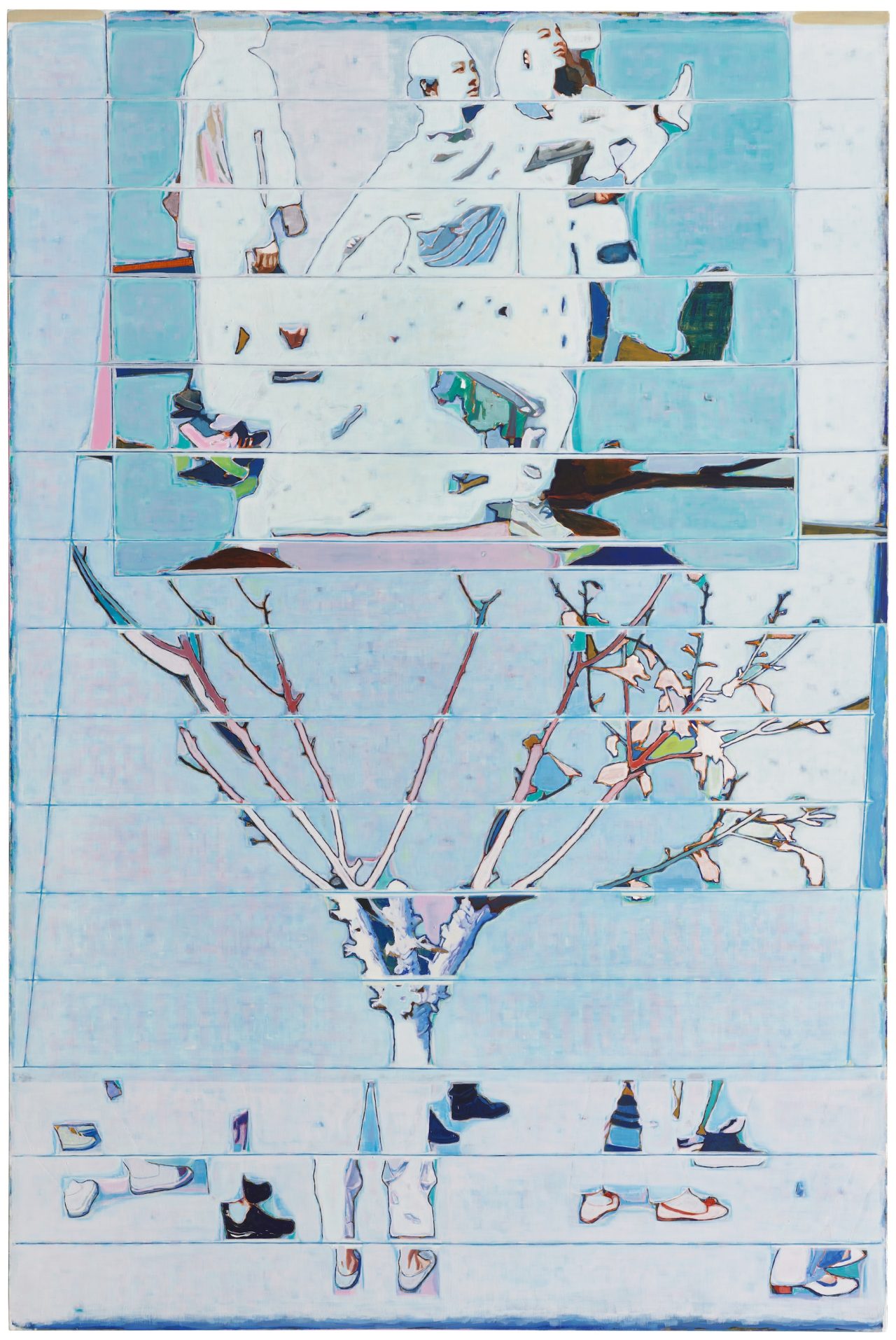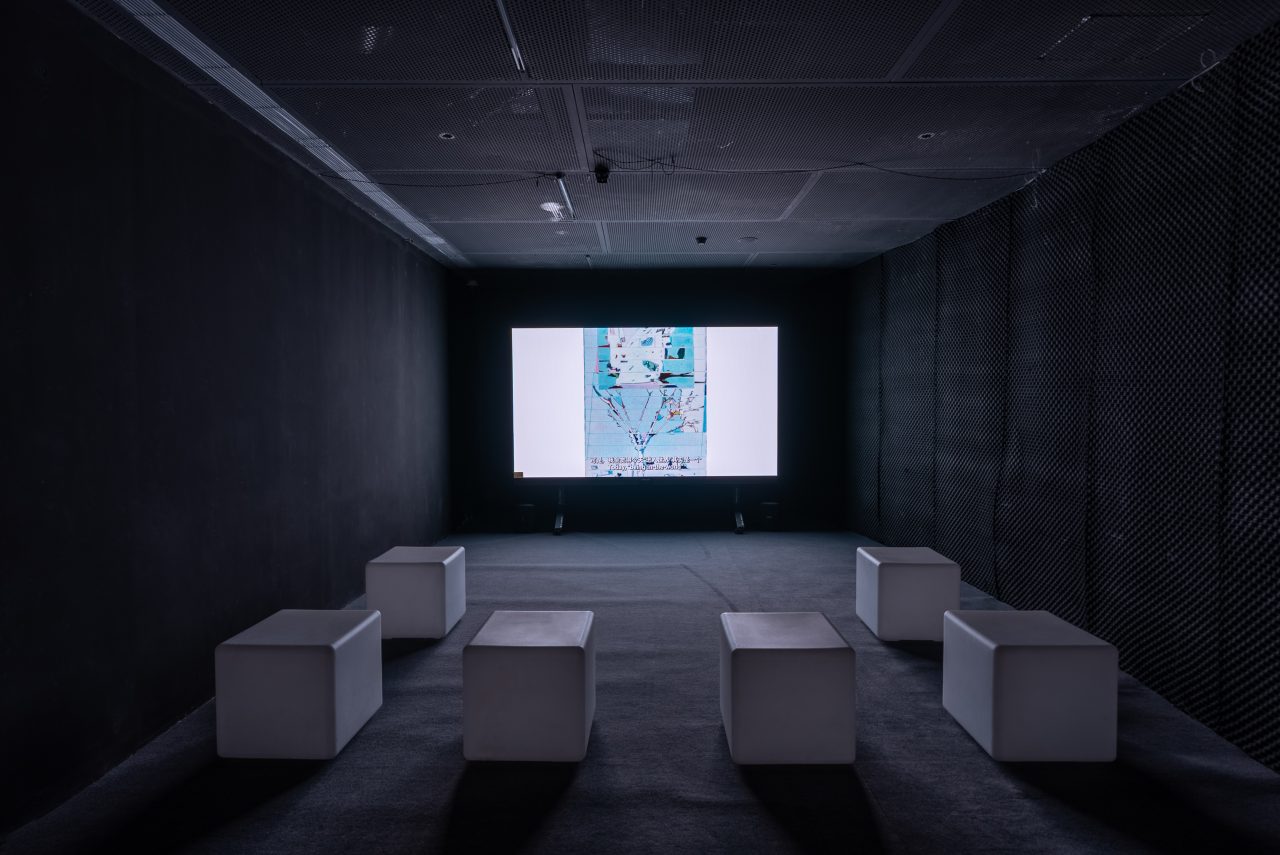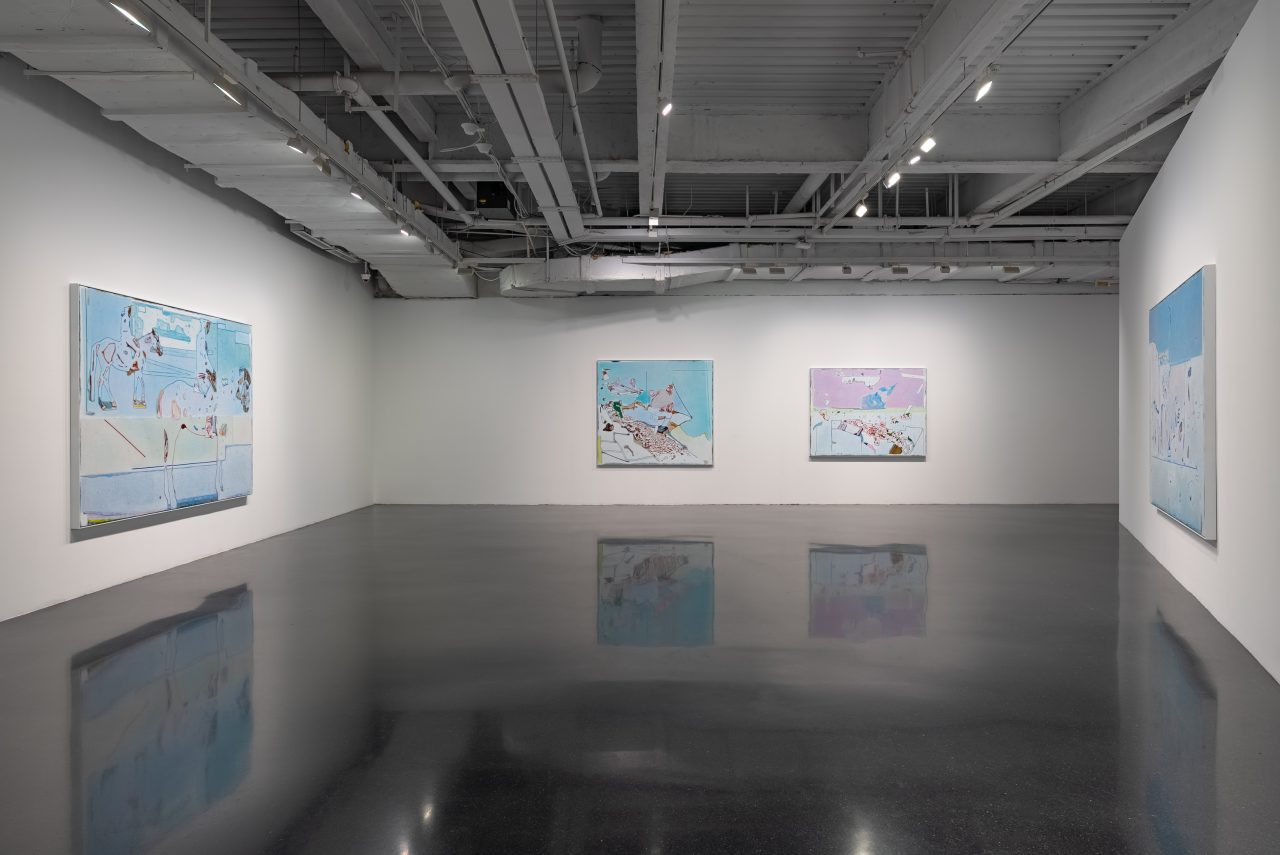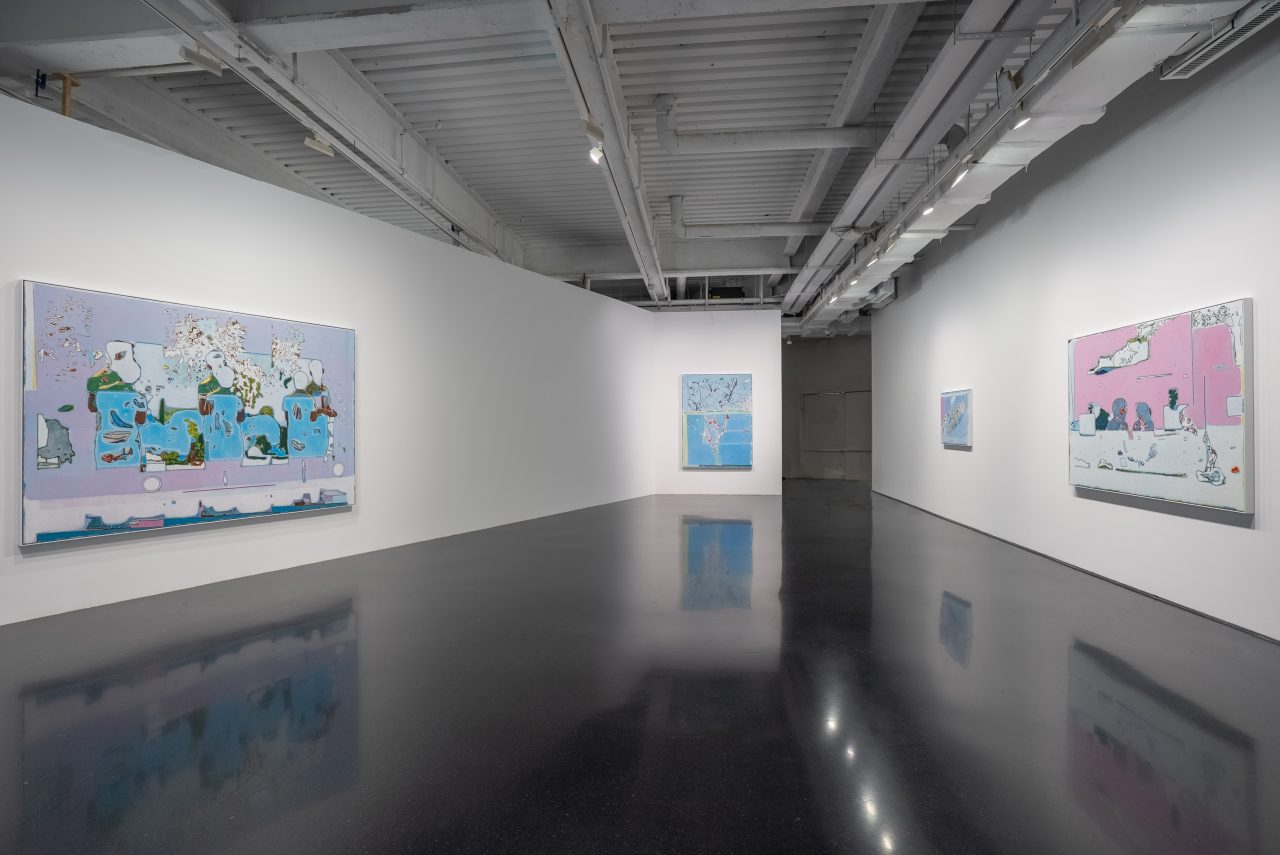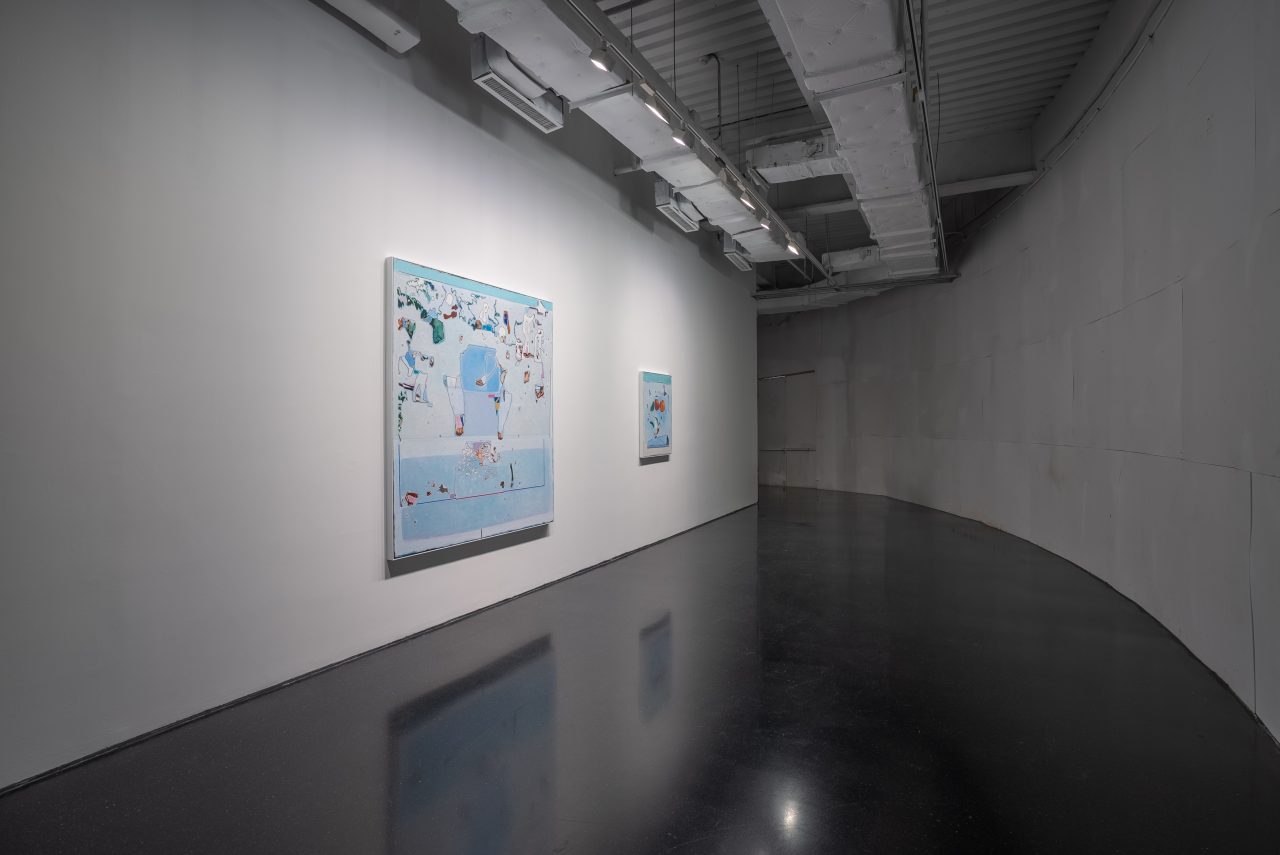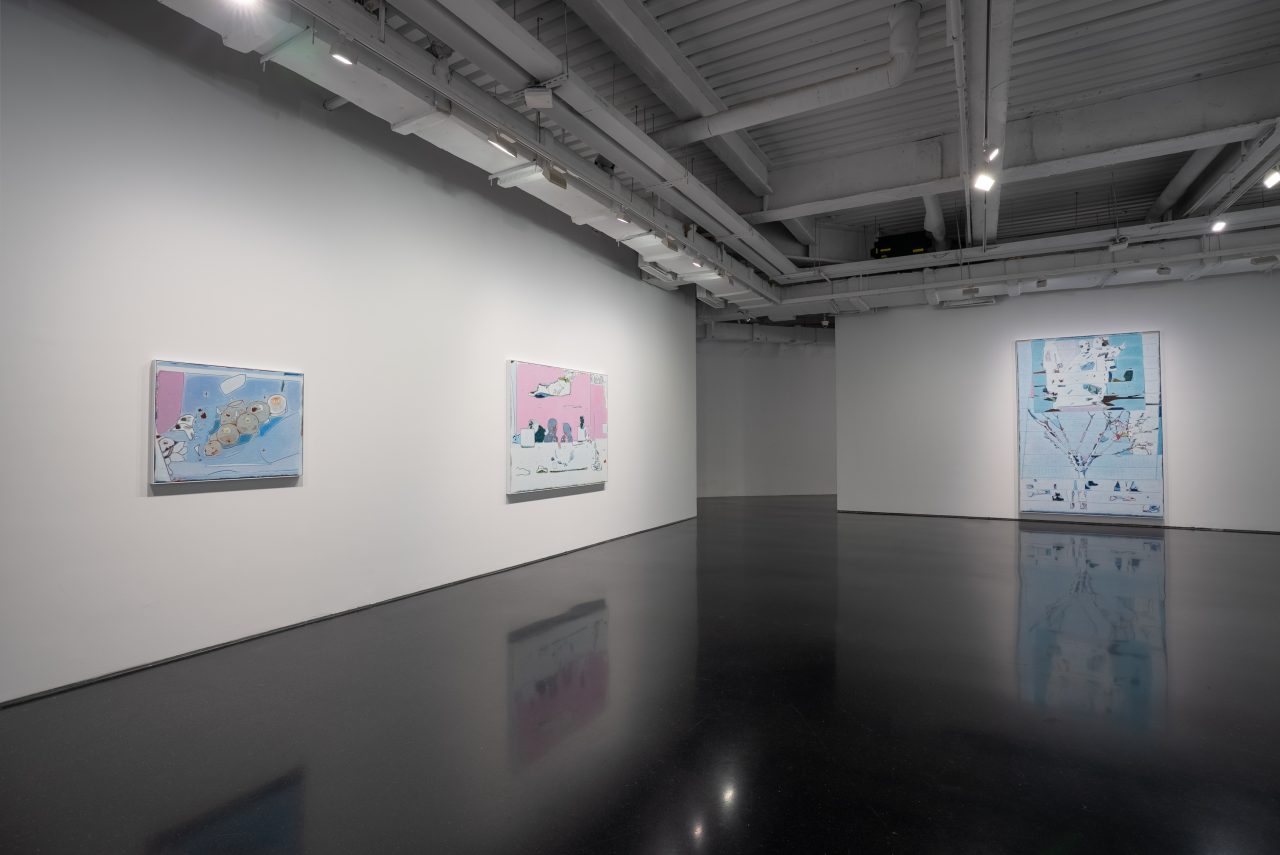ABOUT THE EXHIBITION
PRESS KIT
TANK Shanghai is honored to announce the solo exhibition “People / Tree / Feet” by Tang Yongxiang. The exhibition will open on November 11, 2025, and remain on view through February 8, 2026.
As a painter, Tang Yongxiang adheres to the process of “overpainting” his own works: each day, he enters his studio and, through a set of prescribed repertoire of brushwork gestures and coloring decisions, returns to canvases that were “paused” in their making from the previous workday. This cycle repeats daily, accumulating across years, with the painter’s set of seemingly calculable and near-uncompromising operational actions: the extraction of images from “nearby” his life, the direct use of raw pigments, the application of uniform cross-hatched brushstrokes, and so on. Eventually a painting is “over,” permanently “paused,” and released from his studio into the broader moments of display, viewing, and critique.
This pause, whether manifesting as daily routine or a quasi-permanent indication of a painting’s completion, seems to exist in a state of self-perpetuated release, intrinsic to painting itself and autonomous from the painter’s control. A dozen or so paintings remain suspended here at Tank. They continue to silently vary and allure viewers and critics during the course of this two-month exhibition, unfolding an ambient effect moment of Tang Yongxiang’s paintings.
A “formatted overpainting” before the painting-operator left is a rhetoric derive from the language of computer operation, referring to the in-game action of a video game player. Once the operator steps away, however, the video game machine continues to execute and perform its own narrative movements, unfolding a moment of ambient motion intrinsic to the computer itself.
Computer acts as an intermediary for the current society of control because it does not re/presents or simulates the world, but directly calculates and executes one. Unlike movies and paintings which are representations of society through images, computer is about action and execution—a form of practice rather than an ontological presence. In this sense, to articulate Tang Yongxiang’s painting and operations through the multiple operational acts between the computer game player and the machine—within and beyond the game’s narrative—is itself an allegorical gesture that speaks to the calculative and executive logic of today’s society of control.
Viewing from the broader, systematic perspective of the art-operator and the institutional “machine,” the relationship of painting and its corresponding actions is that of control and counter-control, the computable and the uncomputable, execution and counter-gaming with the painting-operator. That is, the “painting-operator” and the “painting-machine” constituted an allegorical narrative within and beyond painting-diegetic. When Tang Yongxiang pressed “pause” upon entering Beijing’s contemporary Chinese painting scene in 2007, suspending his own specific game of realist painting for several years, it represents the operator’s act-moment of the player’s subjectively initiated algorithm, one that manifests the act-moment of artistic hacking and critique.
The critical narrative of Tang Yongxiang’s paintings is an ambivalent expression of something “meaningless,” “inactive,” and “resists to give in to total nihilism.” It insinuates a reality that can now be described as the affective tribulation of being an ordinary constituent of the society of control. Can we still reimagine and bring forth a collective utopia in the age of control? Does Tang Yongxiang’s painting operate as “painting as ontology”—re/presenting or simulating a world, or as “painting as ethics,” an act parallel to the operative logic of the contemporary society of control?
How might the painting-operator take actions standing beside the painting—this “painting as allegorical machine” in the society of control—just as any actant within the actant-network society stands beside the allegorical machine of their own social assembly-line station? Similar to Tang Yongxiang’s act of “pausing,” each of us may need to perform an operation of forsaking our ready-to-hand acts. This pausing is not a once-and-for-all solution, but must be revisited perpetually.
1.The exhibition title People / Tree / Feet is inspired by the artist’s painting A Tree, a Group of People, and Some Feet (2024). This artwork title originated from a formal description made by institution staff according to their first impression of the painting after its completion.
2.This text is excerpted and edited from the curator’s essay Of Painting: the Moment of Ambience Act—One Among All Allegories of Painting in the Society of Control (2025).
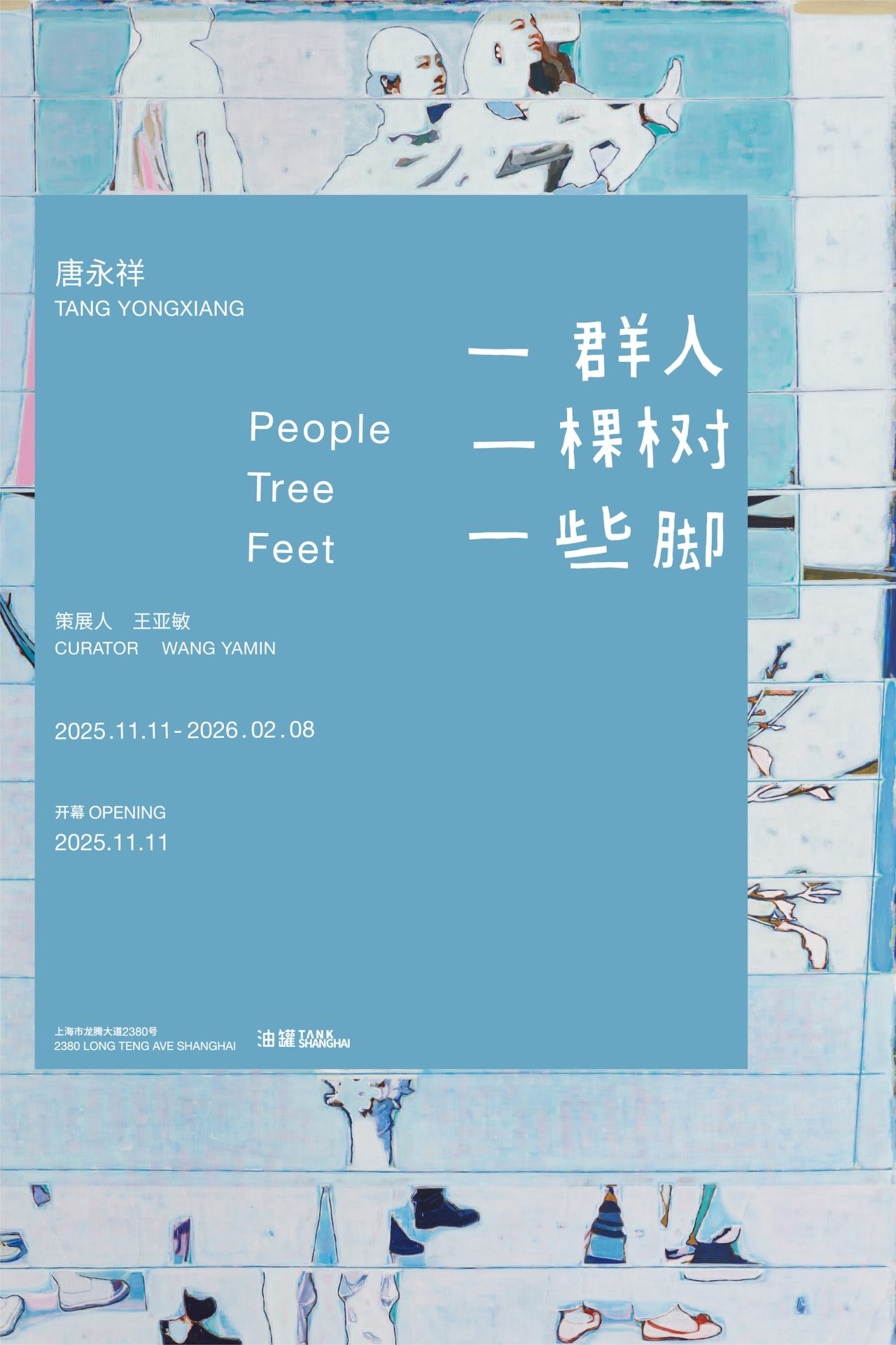
ABOUT THE ARTIST
Tang Yongxiang
Tang Yongxiang (b. 1977, Hubei Province) graduated from Hubei Institute of Fine Arts in 2007 and currently lives and works in Beijing.
Using real life images as the entrance to painting, Tang works with the changing relationships between forms and between colors that are both constantly developed during the painting process. The images are mostly snapshots taken by the artist himself and often lack strong significations. Rather than arbitrarily manipulate the existing relationships embedded in the images, Tang prefers to engage in a restrained and persistent struggle with the images while relying on the given structures, leaving the surface with traces of the artist’s countless hesitations, decisions, and thoughts. In his painting process, contingencies and uncertainties would be the kinks in constructing new relationships.
His work has been shown in solo exhibitions at TANK Shanghai (Shanghai), SSSSTART Research Centre (Shanghai) and Magician Space (Beijing), Lévy Gorvy Dayan & Wei (Hong Kong), and was included in exhibitions at Yuan Art Museum, Taikang Art Museum, National Art Museum of China (Beijing), Start Museum (Shanghai), Beijing Minsheng Art Museum (Beijing), 69 Art Campus (Beijing), Wanlin Art Museum (Wuhan), Today Art Museum (Beijing), etc.
His work is collected by Start Museum, He Art Museum, Deji Art Museum, K11 Art Foundation, the De Heus-Zomer Collection.

ABOUT THE CURATOR
Wang Yamin
Wang Yamin is a Doctor of Literature, art author, and curator. He currently serves as Chief Curator at the Museum of Nanjing University of the Arts.
He regards contemporary art exhibitions as essential forms of artistic practice. His recent curatorial work and research explore themes such as the re-individualization of the public in contemporary technological and cultural contexts, and the re-creation of everyday life. As a practitioner, he has exhibited and participated in art projects across China, the United Kingdom, and Germany. Notably, he has served as the International Curator Representative for the UK Turner Prize and Hull UK City of Culture, and as a member of the Sino-French Curatorial Exchange Program organized by the French Ministry of Culture. His critical writings and essays have appeared in various art journals, magazines, and exhibition catalogues.
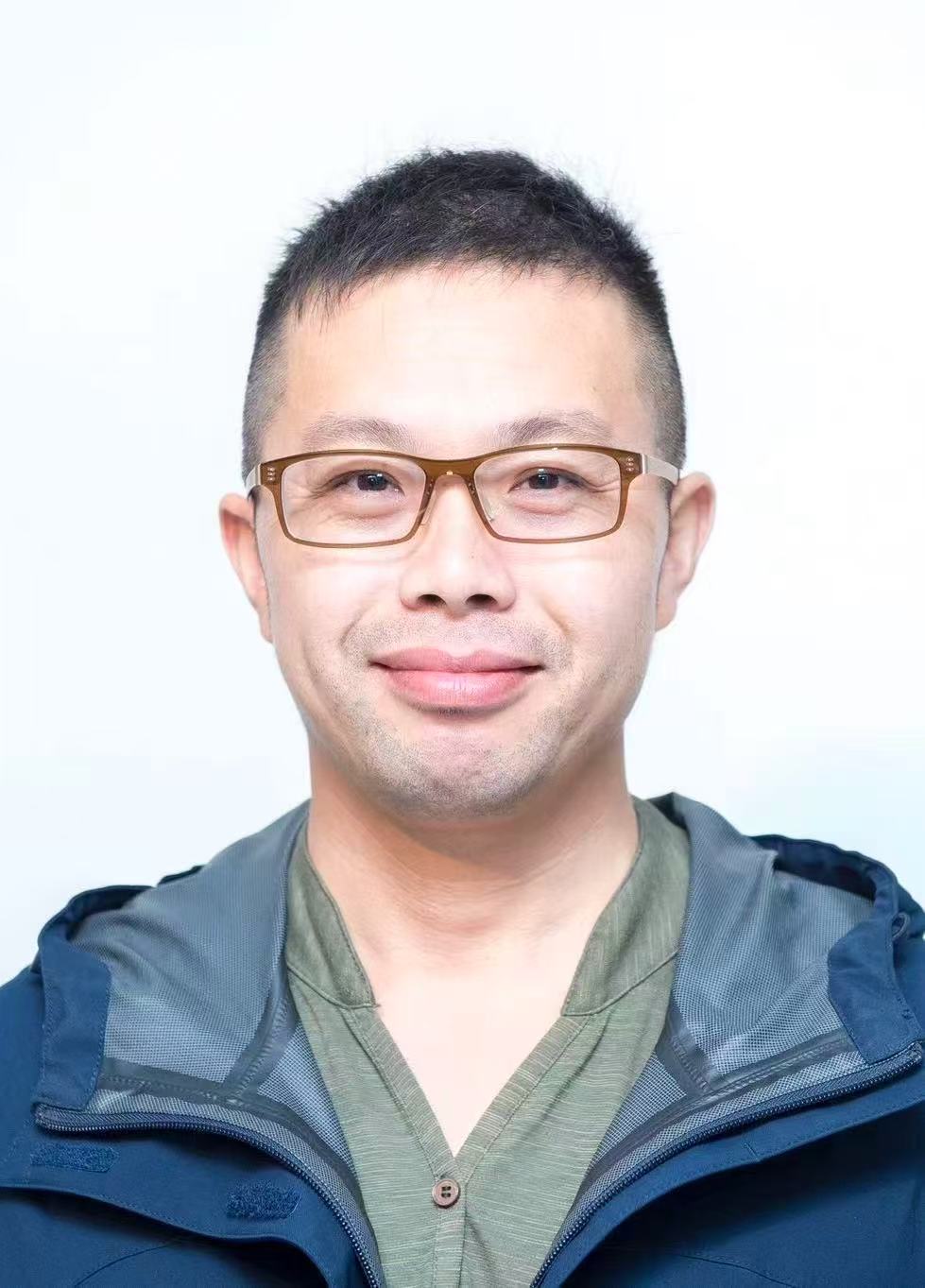
INSTALLATION VIEW
Artworks
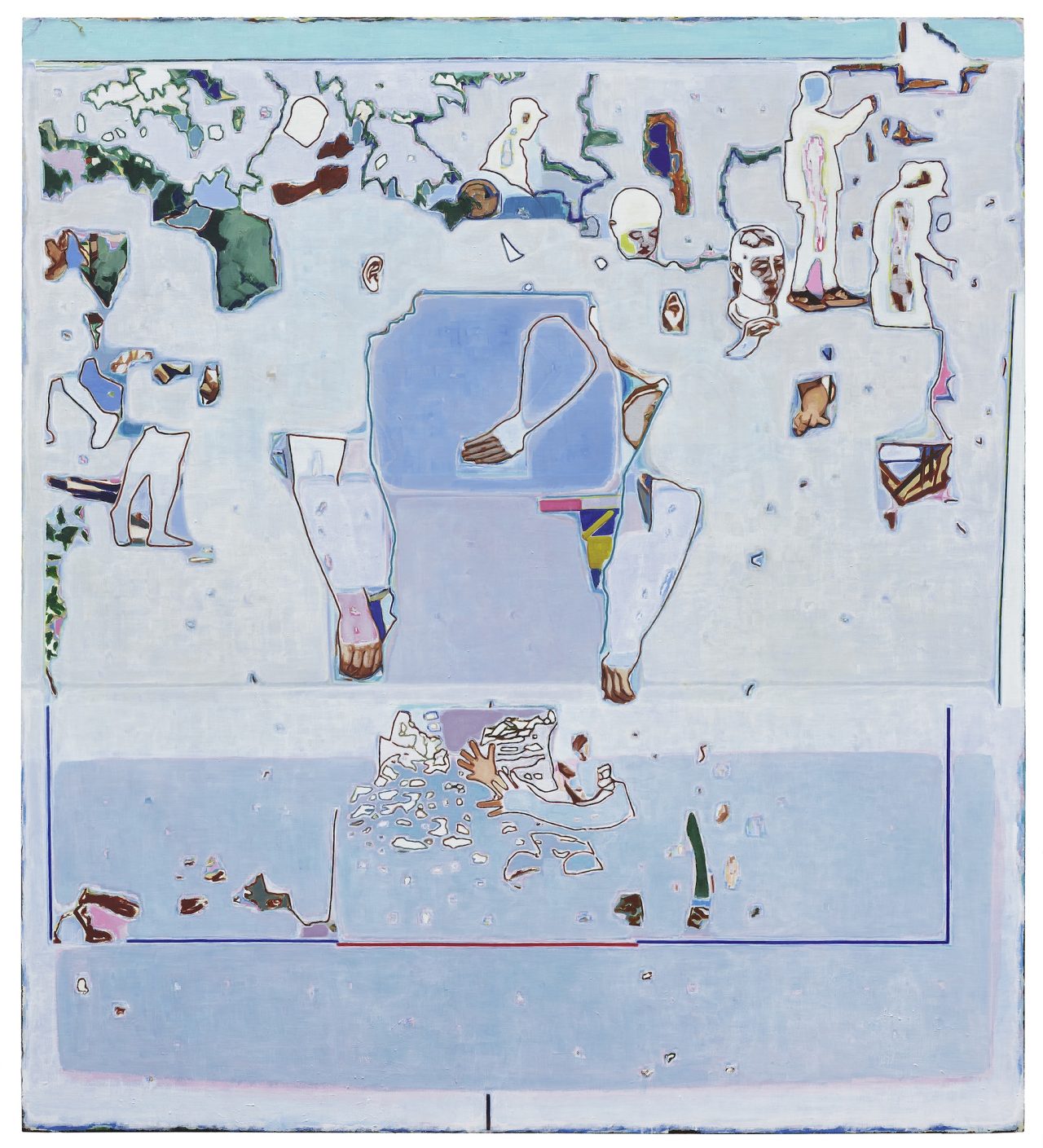
Pale Blue, Several Arms in the Middle
Tang Yongxiang

Two People Riding Horses
Tang Yongxiang

Two Peaches
Tang Yongxiang

Three Couples with Large Areas of Blue on Their Bodies
Tang Yongxiang
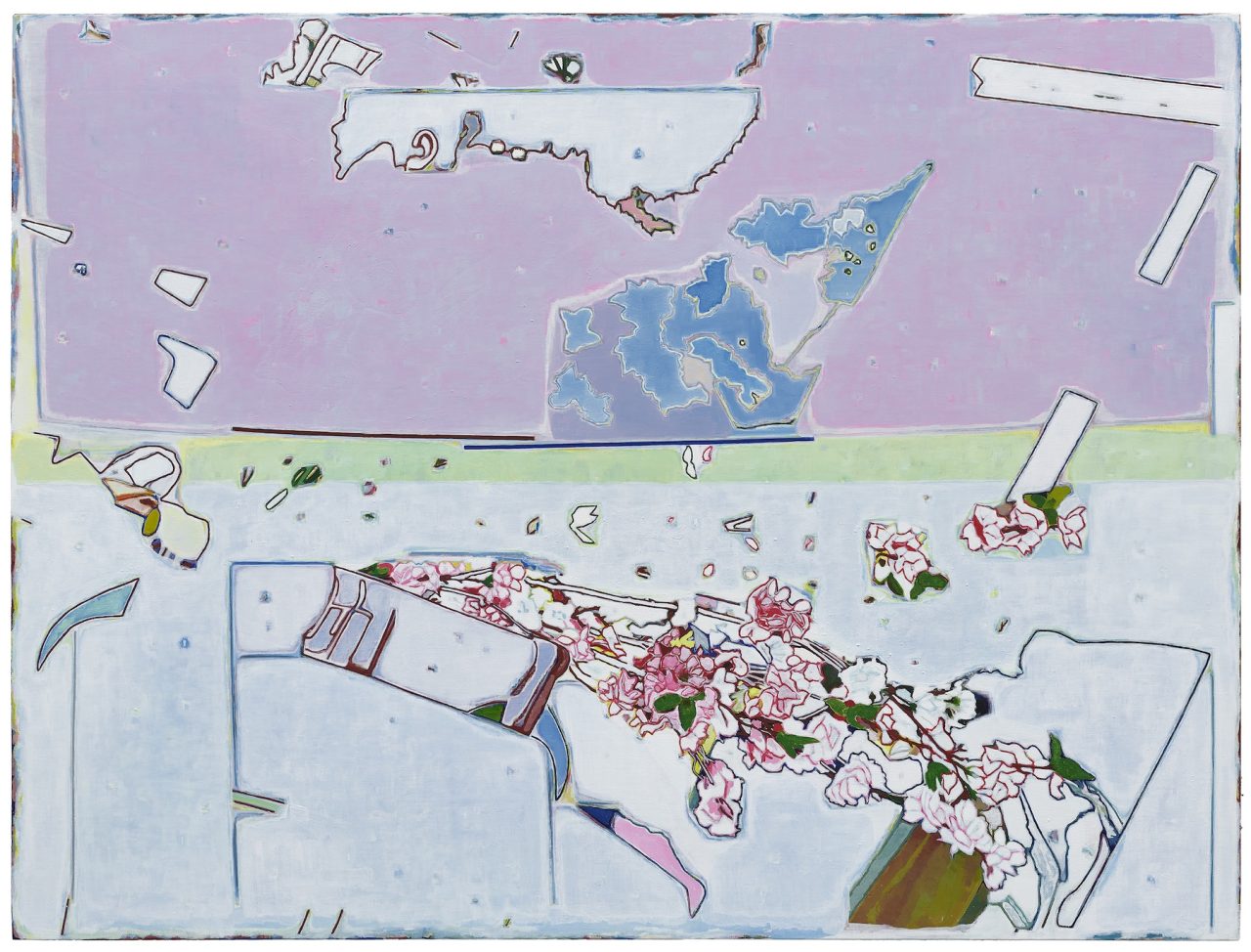
The Upper Half Is Pink, a Bunch of Flowers Below
Tang Yongxiang

Fruit and Some Curved Lines
Tang Yongxiang

Like a Pile of Fruit, with Four Small Crosses
Tang Yongxiang
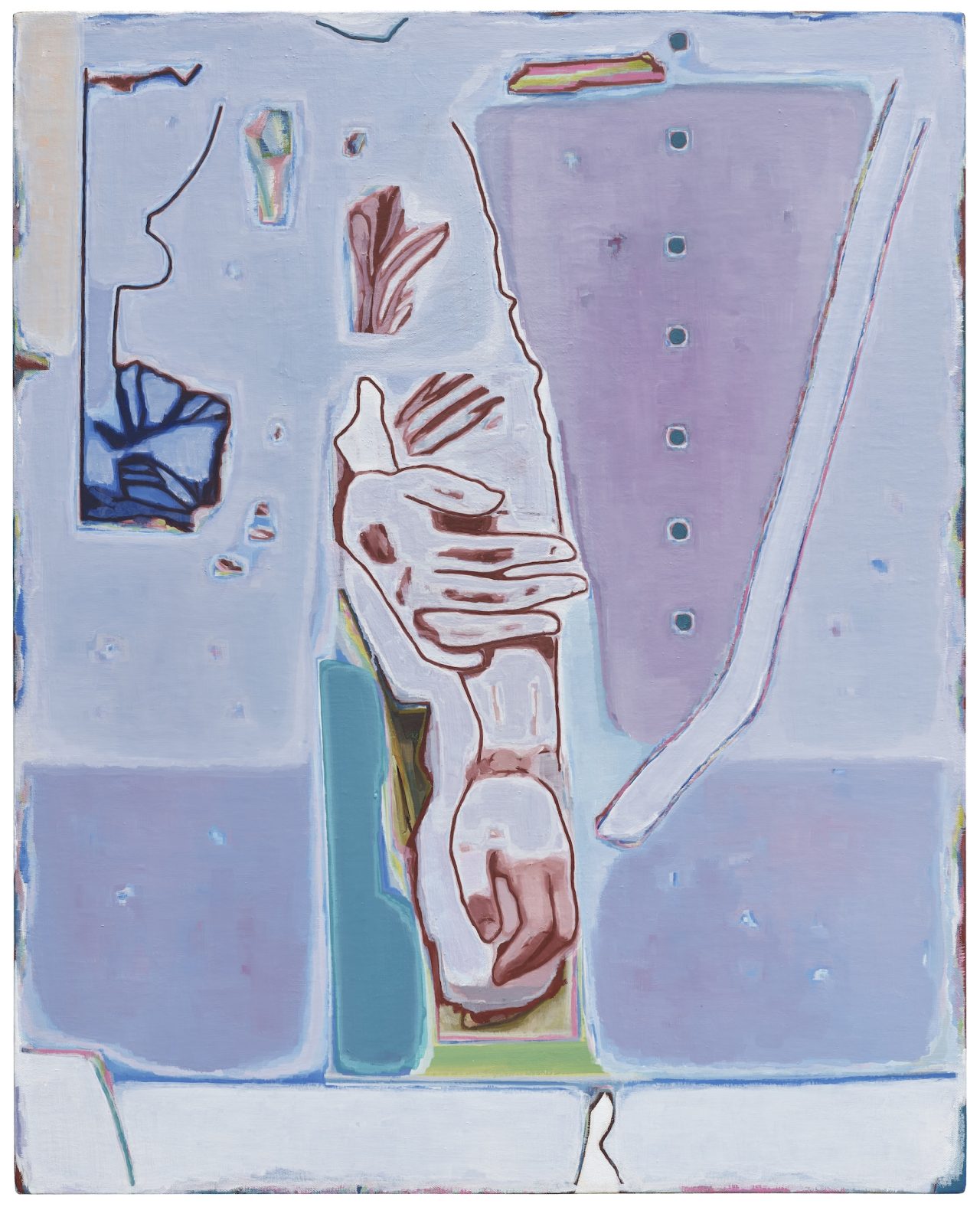
A Hand Linked Around an Arm
Tang Yongxiang

A Standing Leg with a Gripping Hand Above
Tang Yongxiang
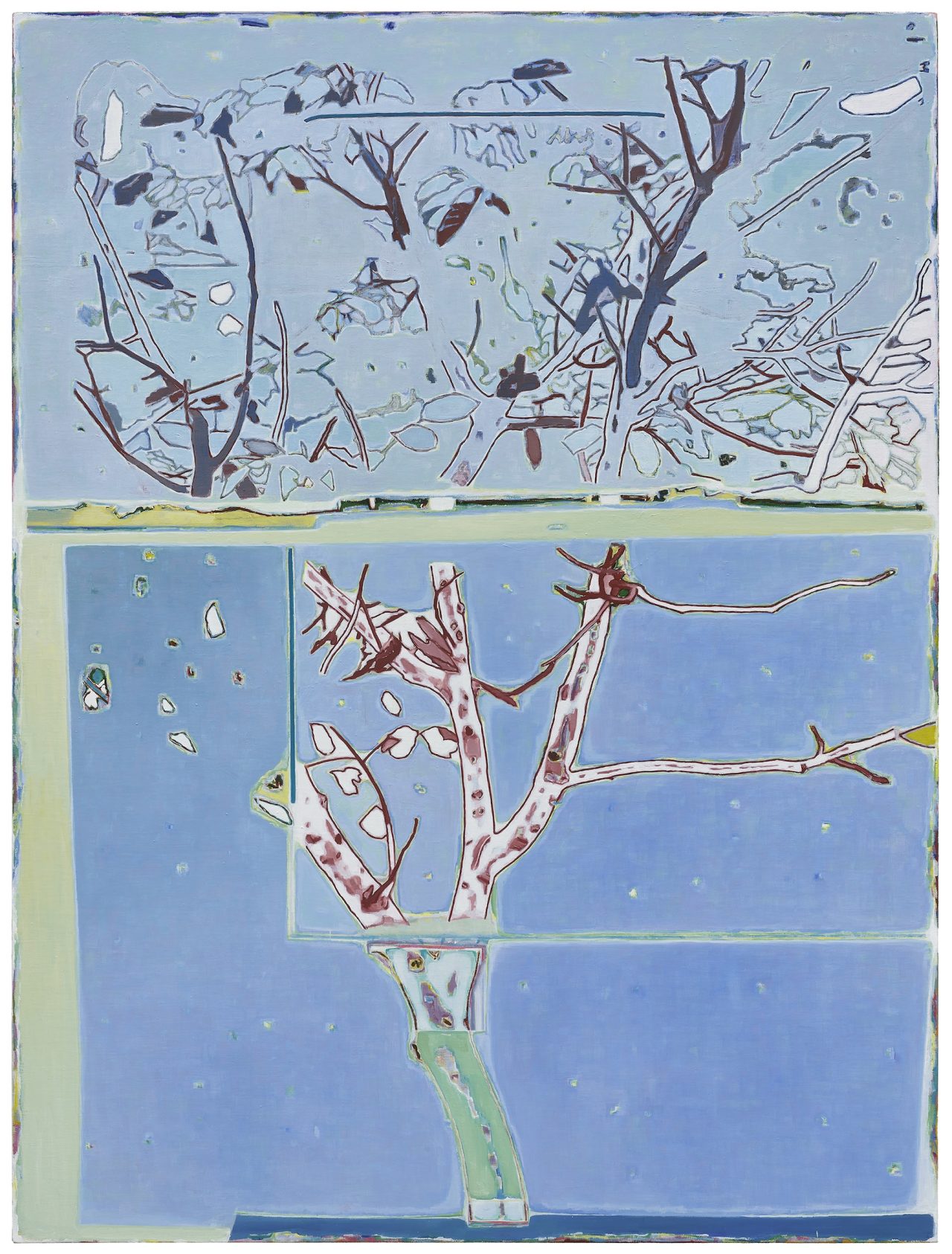
Simplified Branches over a Large Area of Blue
Tang Yongxiang

A Seated Figure and a Boat
Tang Yongxiang
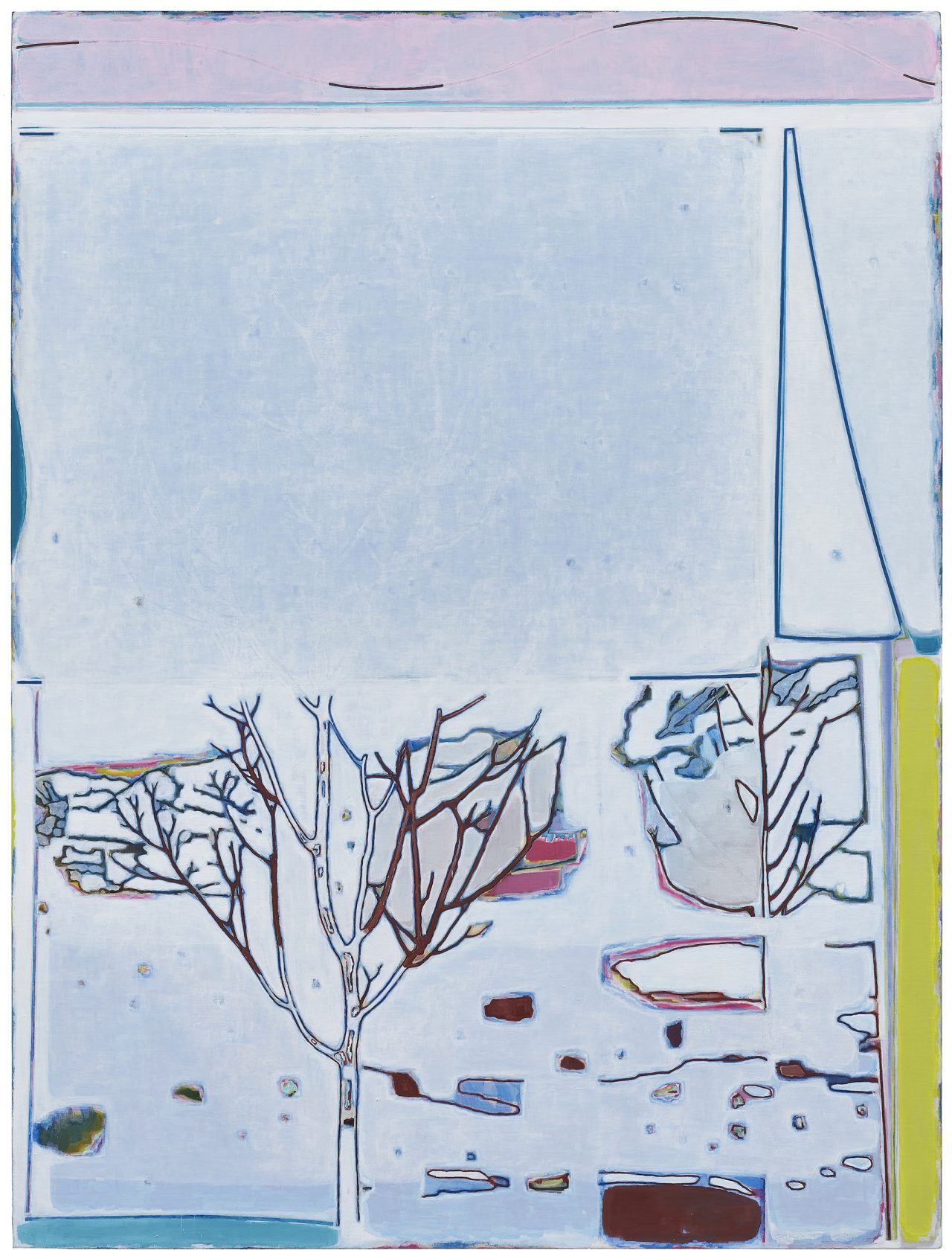
A Tree, Half of It Empty
Tang Yongxiang

A Large Area of Pink with Two Half-Length Figures in the Middle
Tang Yongxiang

A Red Triangle
Tang Yongxiang
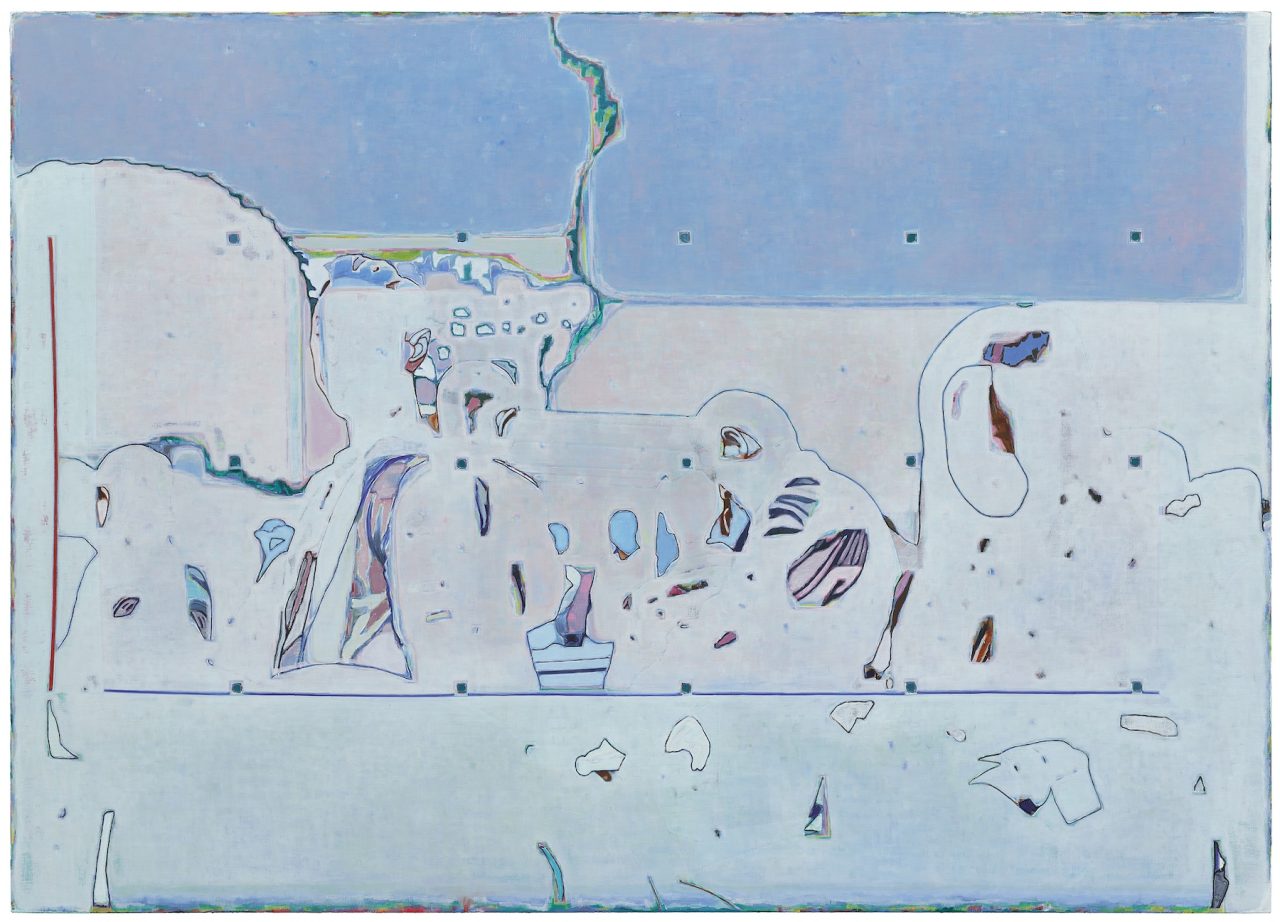
Outlines of People with Blue Above
Tang Yongxiang
